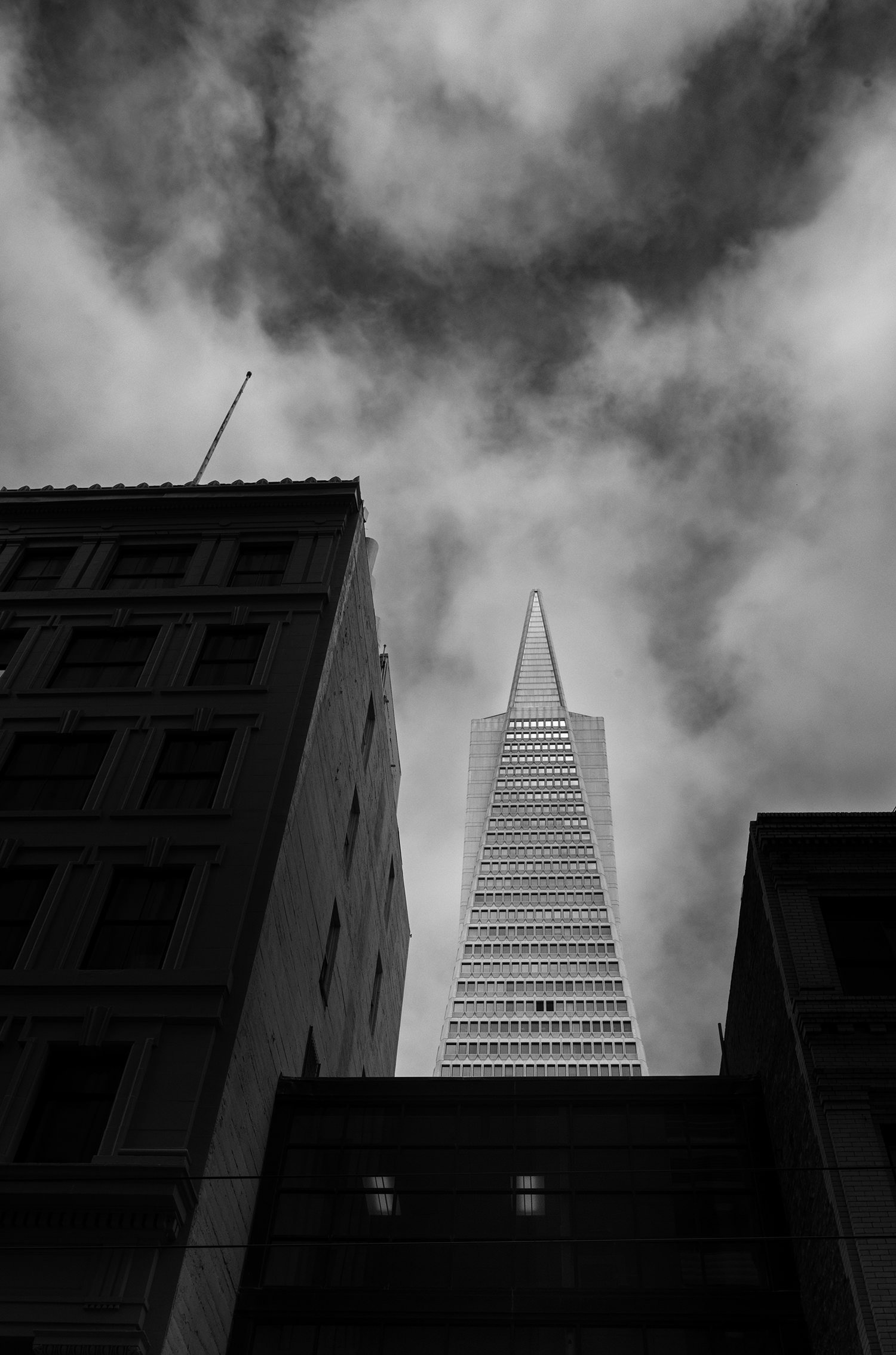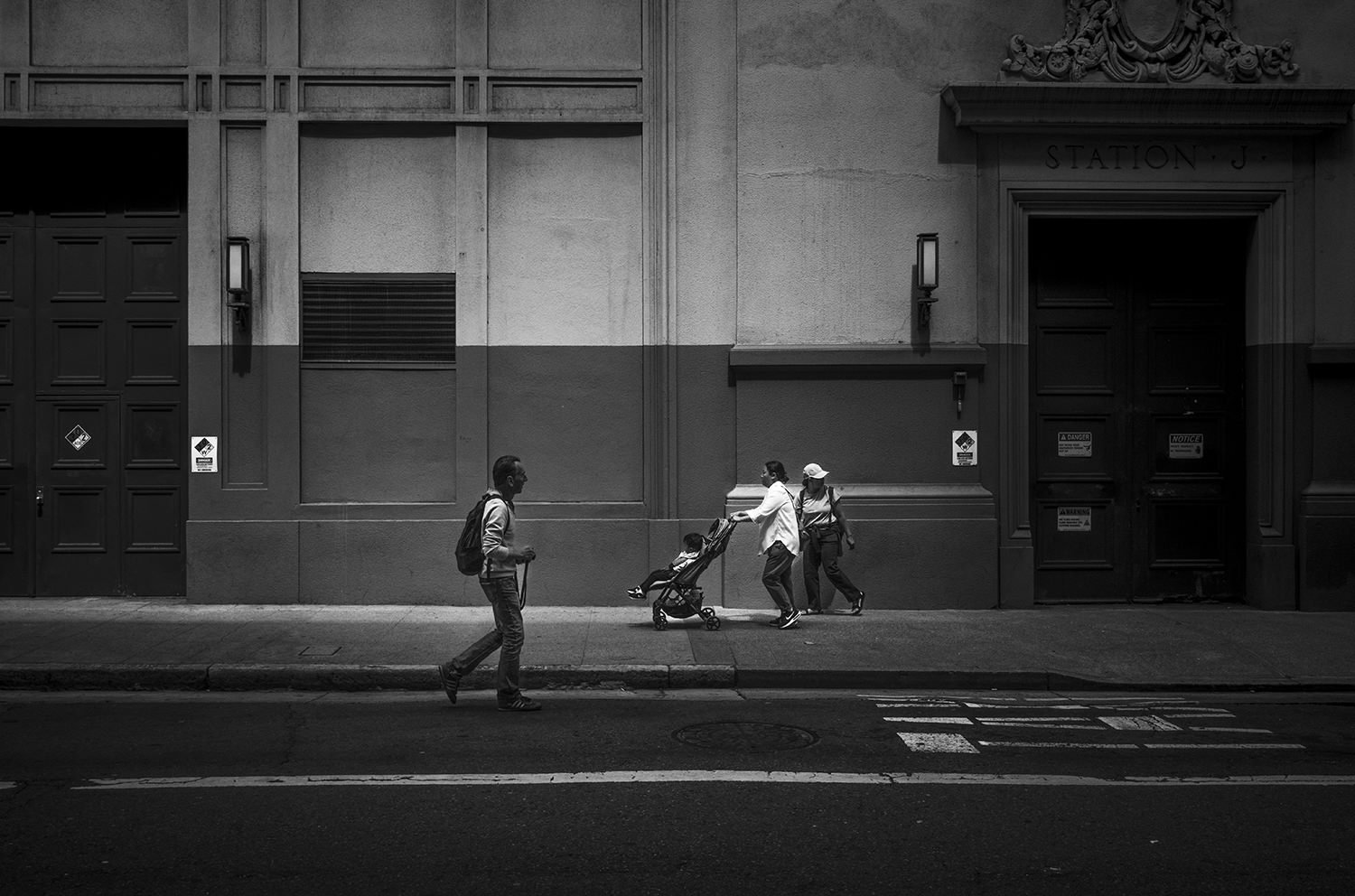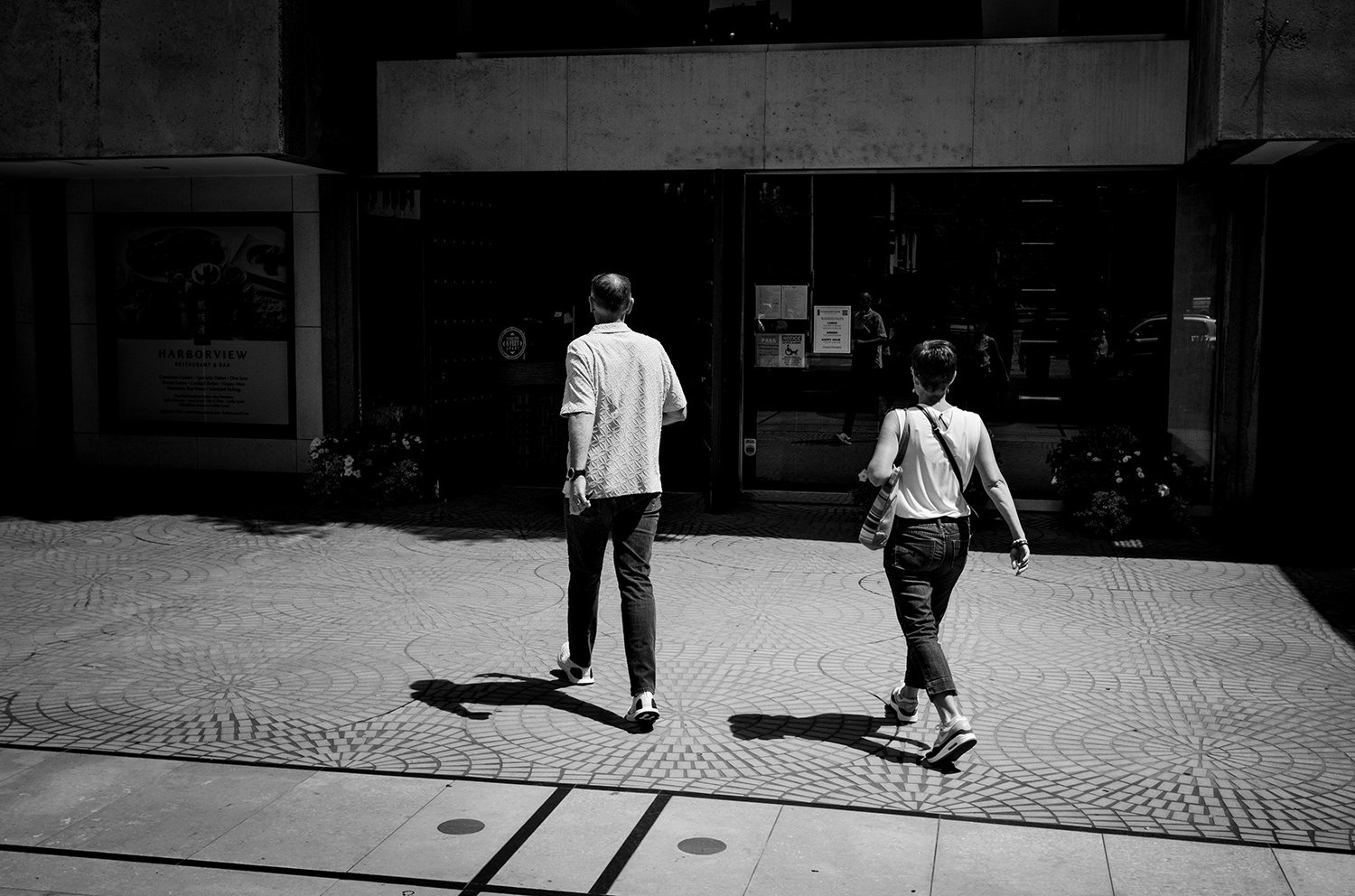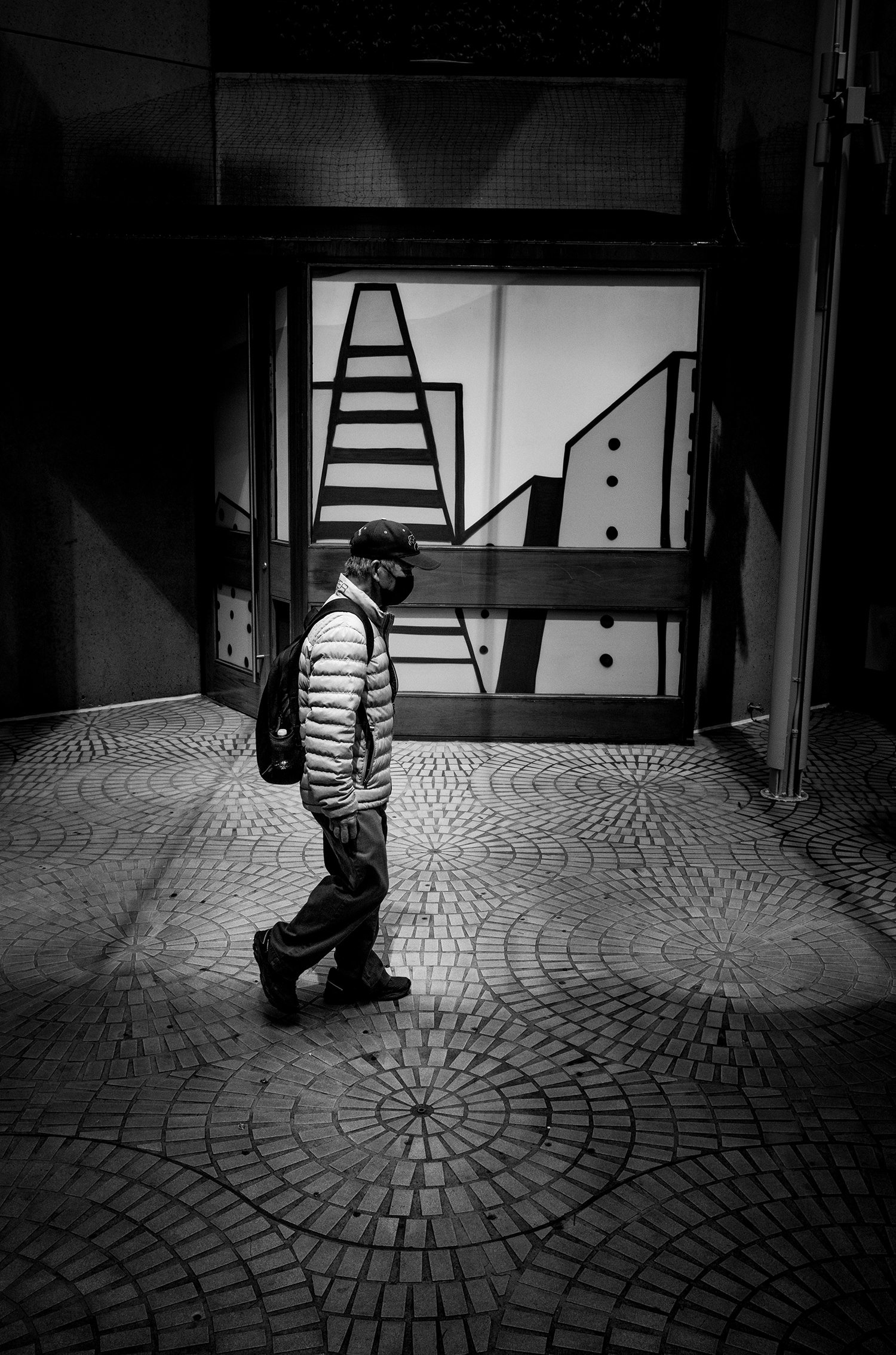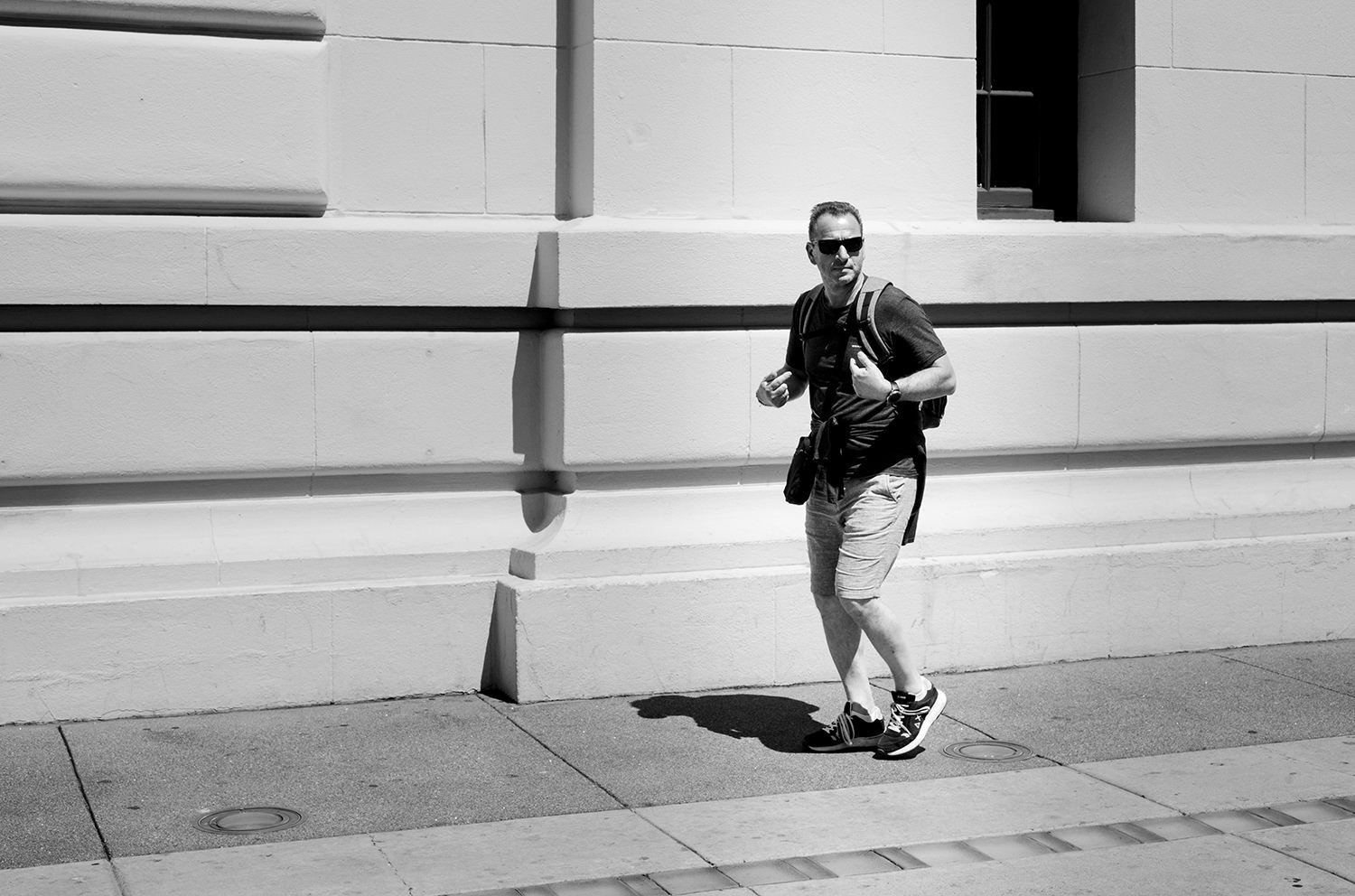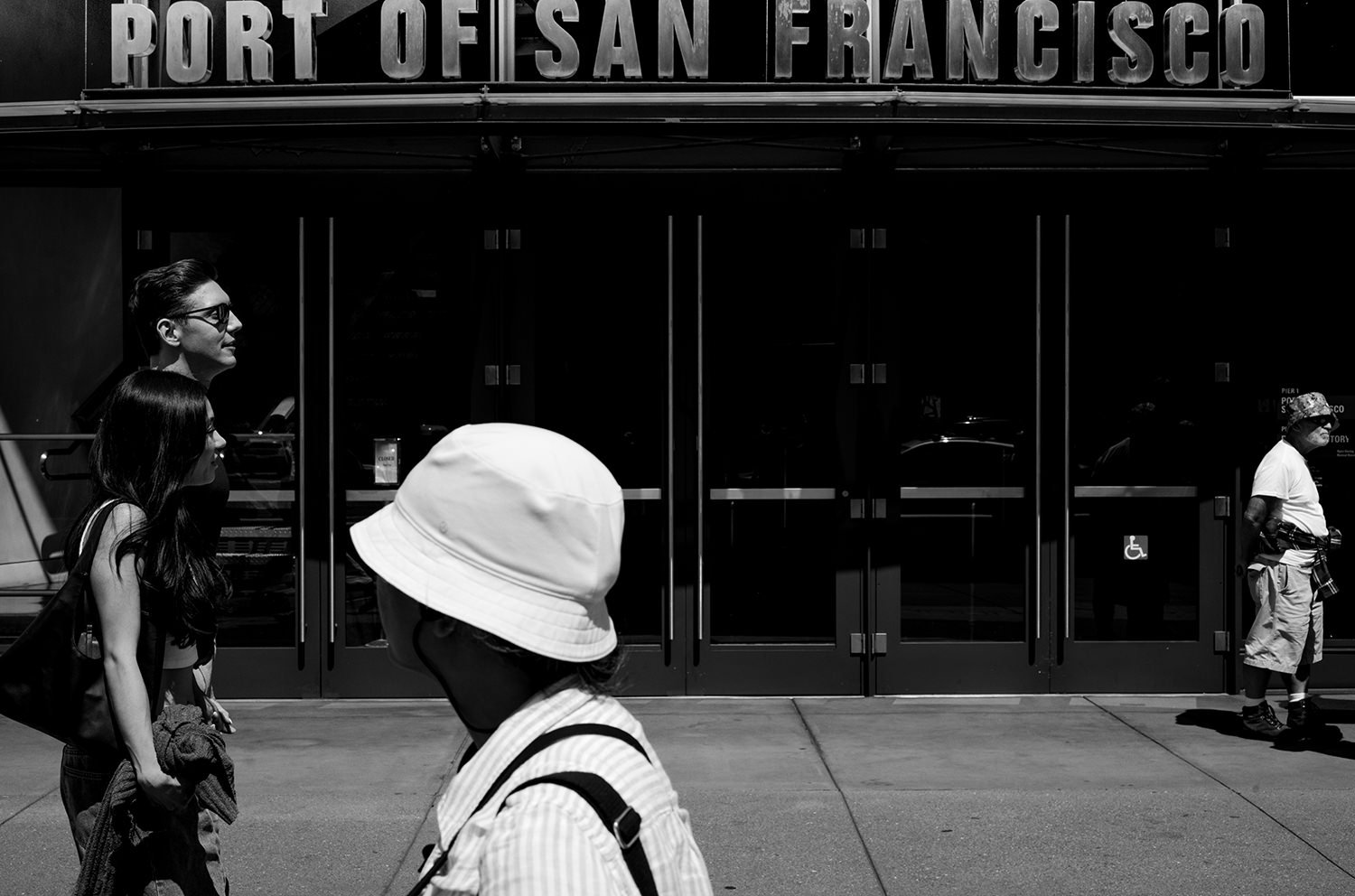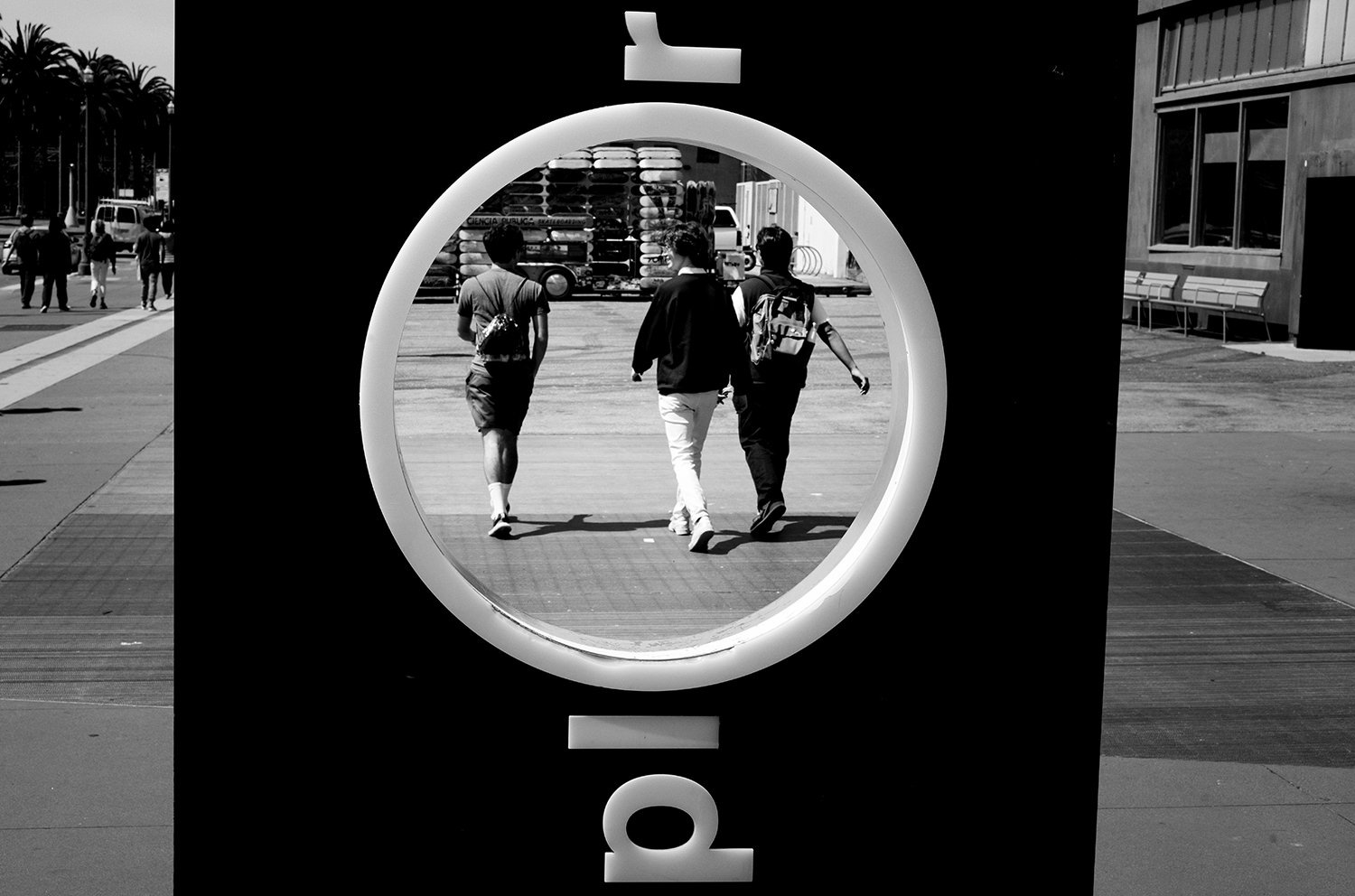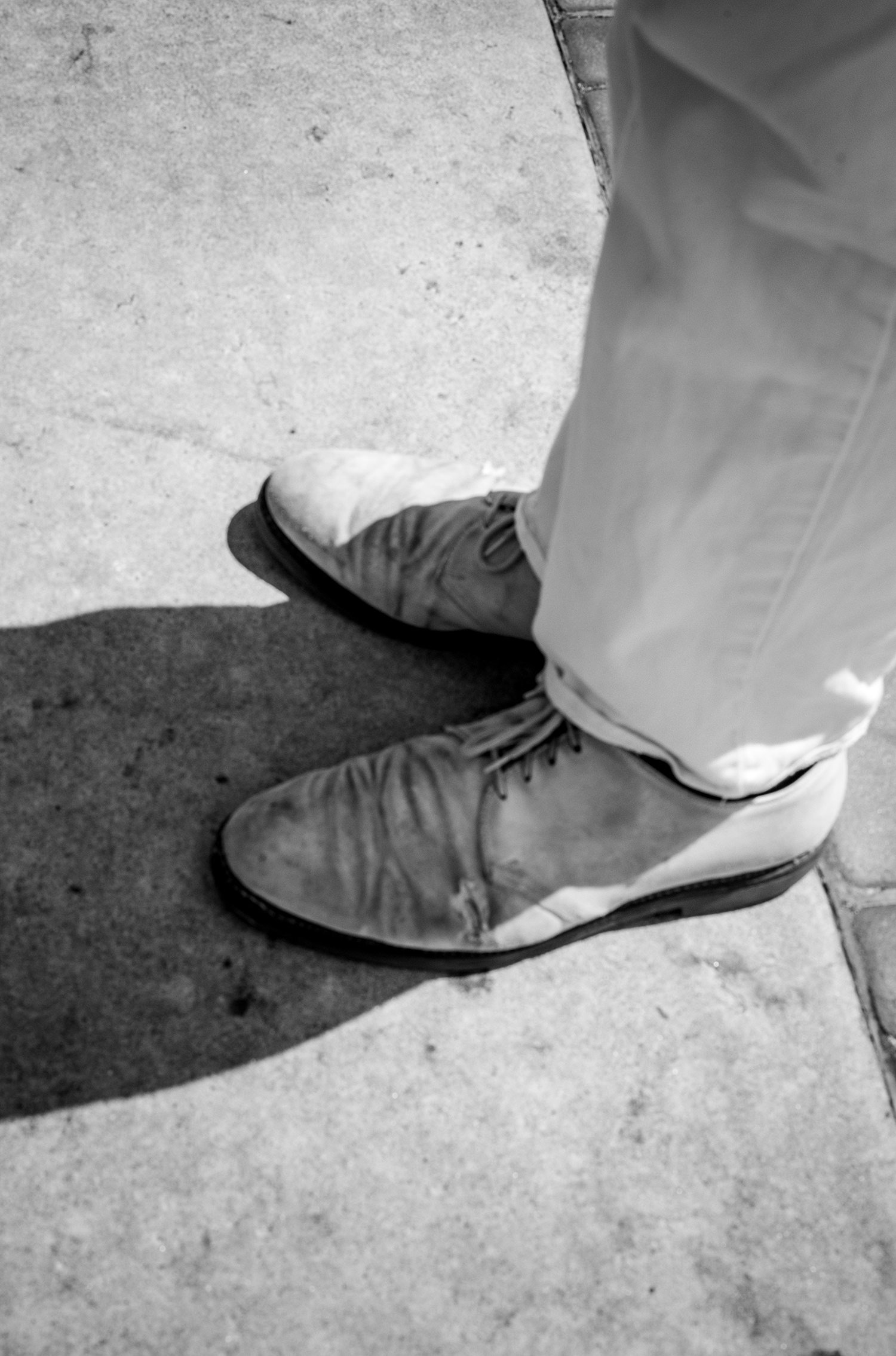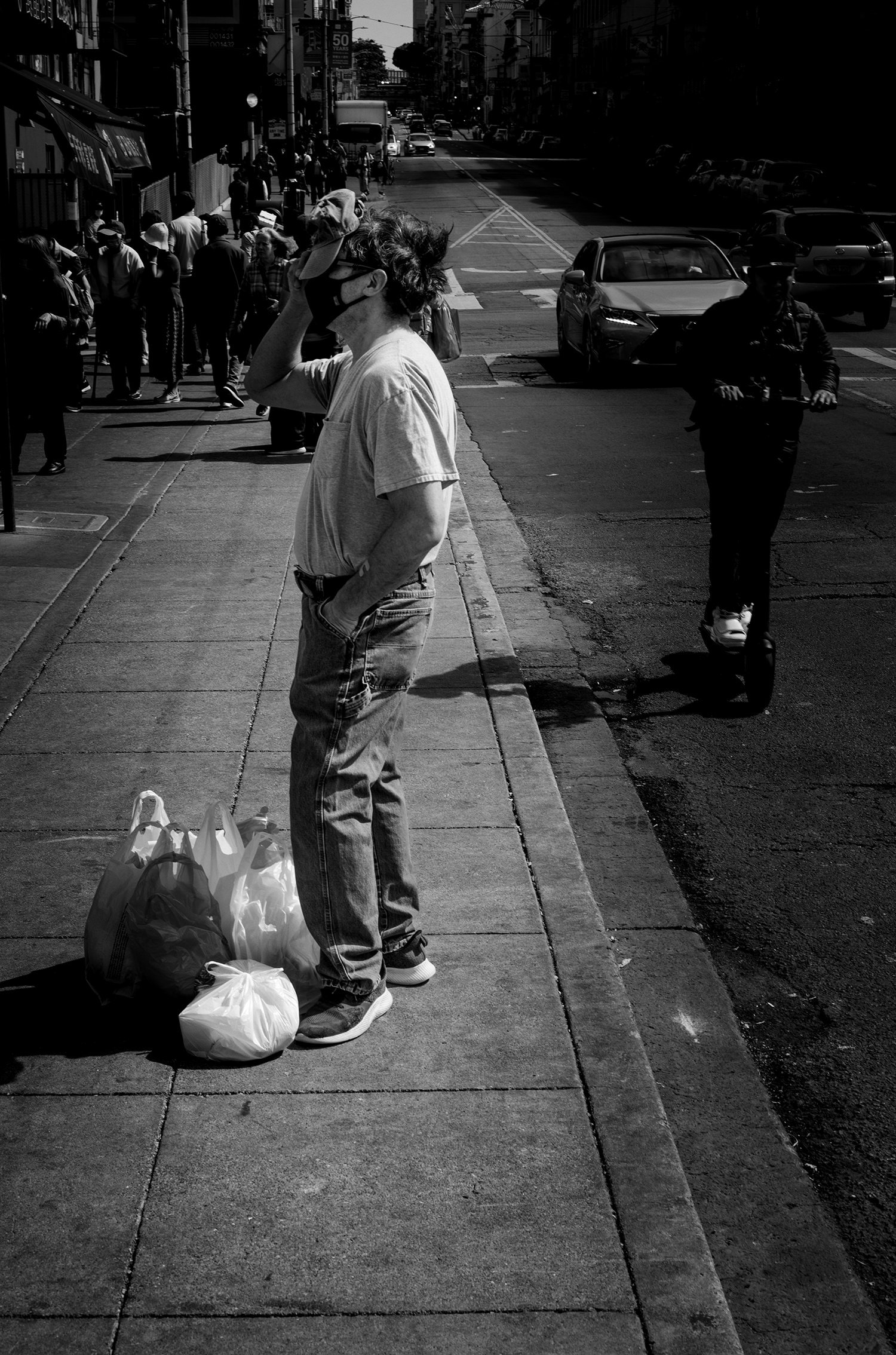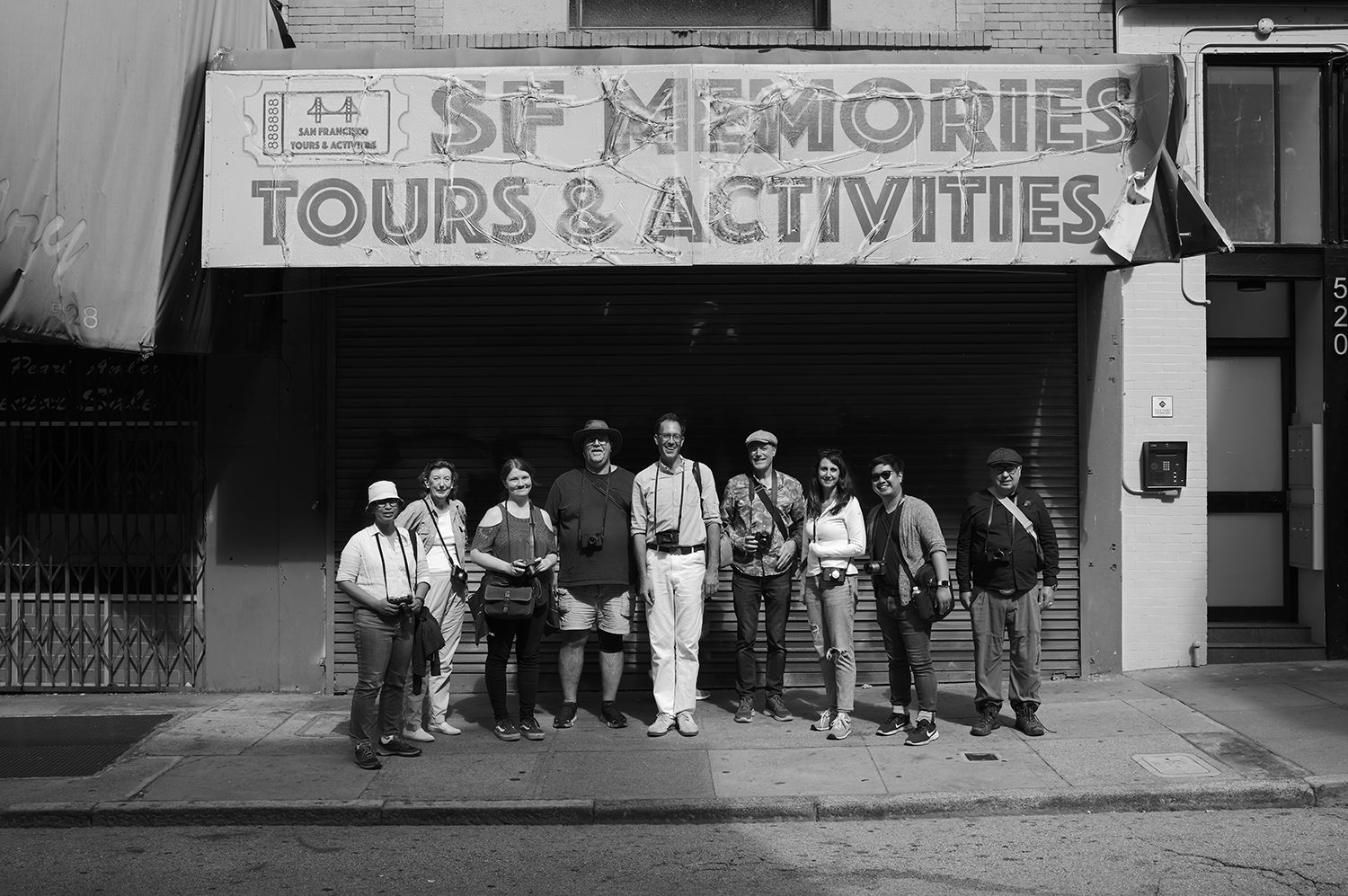Street Photography Workshop with Gus Powell
Gus Powell
Shortly after the 4th of July, an email arrived from the Leica Store in San Francisco announcing a day of street photography with Gus Powell. To tell you the truth, I had never heard of Gus up until that moment in time. Looking back on that now causes me to shake my head back and forth. The man is a talented New York City street photographer and was tutored by the legendary Joel Meyerowitz. I guess I shouldn’t be too hard on myself for not knowing all the major NYC shooters out there. My incredulousness comes after the fact, after spending the day with a man who has fundamentally changed the way I look at street photography.
My oldest daughter had recently moved down to the Bay Area and I had lent her one of my cameras to take with her. She has always expressed an interest in photography and I thought this would be a good opportunity to introduce her to street photography and also be a good father/daughter bonding experience. So I signed us both up for the workshop.
The night before the workshop, I drove down to her apartment and spent the night. We awoke and headed over to Marin to eat breakfast at one of my favorite greasy spoons. Having been on street photography workshops before with Alan Schaller and Matt Stuart, I knew it was going to be a day filled with lots of walking.
We arrived fifteen minutes or so before 10am when the class was supposed to start. The store had a gallery opening of some of Gus’ work two nights before, so we perused those pictures while we waited. Finally, Gus gathered us all in the rear of the store and we sat down for a presentation. The workshop was to be two hours in the store before heading out for four hours walking around San Francisco taking pictures. There were around 17 attendees.
The class started with Gus discussing his various exercises for the street. These included some common street photography tips such as fishing (staying in one location for a while) and following (pursuing an interesting subject). He also talked about having shot lists and wish lists before going out and also forcing yourself to take half a dozen head shots if you’re feeling nervous or timid. But the real star of this lecture, and the most useful, was his idea of Sketching.
Gus’ version of Sketching involves using the camera to sketch a scene, or a patch of light, or a particular subject matter and just shoot them without the pressure or stress of having to make them perfect. You’re just like an artist sketching out ideas for a painting, trying different aspects that may eventually make it into the final print. This gets your creative juices flowing and frees you up to just go out and shoot and start to build toward a particular shot or scene. This is one of those things that sounds sort of obvious but it had a big impact on my daughter and I and the rest of the attendees.
Another important technique Gus discussed—and would come into play for me later that day—was to find an anchor shot. An anchor shot was a scene or subject that would make for a good street photo, and then instead of getting the shot and moving on, stick around and try and get something else to add to the scene. This is very similar to something Sean Tucker discussed in one of this recent YouTube videos about layers. It’s a great piece of advice and something I will keep in mind from now on.
Next, Gus walked us over to the pictures hanging in the gallery and talked us through each photo: where it was, what he was doing, how he found the subjects, etc. And then he had us return to the rear of the store. Before the workshop, Gus had requested that we each send him three of our own photos and one photo from a photographer we admired. As we sat back down, Gus fired up his computer and he showed each student’s set off photos while making comments, etc. It was a great way to learn more about our fellow students and to get us in the mood to go out and shoot.
After a ten minute break, we headed out into the street. I had my Leica M10 Monochrom and I lent my daughter the Leica Q2 Monochrom for the day. I will admit, it is difficult going out shooting with a teacher who shoots color when all I have is a black and white camera. I had a similar experience on Matt Stuart’s workshop. In fact, soon after Matt’s workshop, I sold my Leica M 246 Monochrom for a regular M10. That lasted for about a year before I purchased the M10 Mono and sold the M10. Color is great. Color street is fantastic. But it’s just not me.
We headed out through the gates of Chinatown on Grant street for a couple of blocks before turning toward the Embarcadero and the Ferry Building. It had been four years since I had watched a true professional work. I forgot how jaw-dropping an experience it was. Gus would hustle up to people and get in their face (not in a rude way, just super close as if he was a friend). And people pretty much ignored him or weren’t bothered by him.
This is a good time to bring up another important lesson I learned on this day. Gus was dressed in a long-sleeve, button down shirt, with a pair of cotton slacks and his signature white/brown shoes. He mentioned in his talk about the importance of looking nice while working out “in the office.” This struck home with me. Having been born and raised in California, my typical uniform for shooting is wearing a black t-shirt and a pair of cargo shorts. Watching Gus work, and seeing how others were dressed for the day, made me double-think the way I dress when I go out shooting.
The best word I can use to describe Gus was “manic.” He was always on. His head was on a swivel, constantly looking for new scenes or subjects to shoot. He also did a wonderful job chatting with each of us during the day. He is very friendly and personable and someone I would love to go out shooting with again.
We stopped for a lunch break at the Ferry Building. After lunch we continued walking down the wharf toward Pier 39. When we got to Bay Street, we started making our way back to the Leica store. We headed through North Beach and Chinatown before finishing at almost exactly 4pm back at Leica.
My watch said 10K steps, but with all the hills and such, it felt like a lot more steps than that. Shoot, we usually double that with no problem at Disneyland.
After having spent the day watching a master at work, I can confidently say that I am a better street photographer. I feel more confident in taking photos of strangers and I also don’t feel as much pressure to “get the shot.” Altering my attire and treating going out shooting as going to work was another bonus tidbit. If you happen to have the chance to attend a Gus Powell workshop, jump on it. You will not be disappointed.



